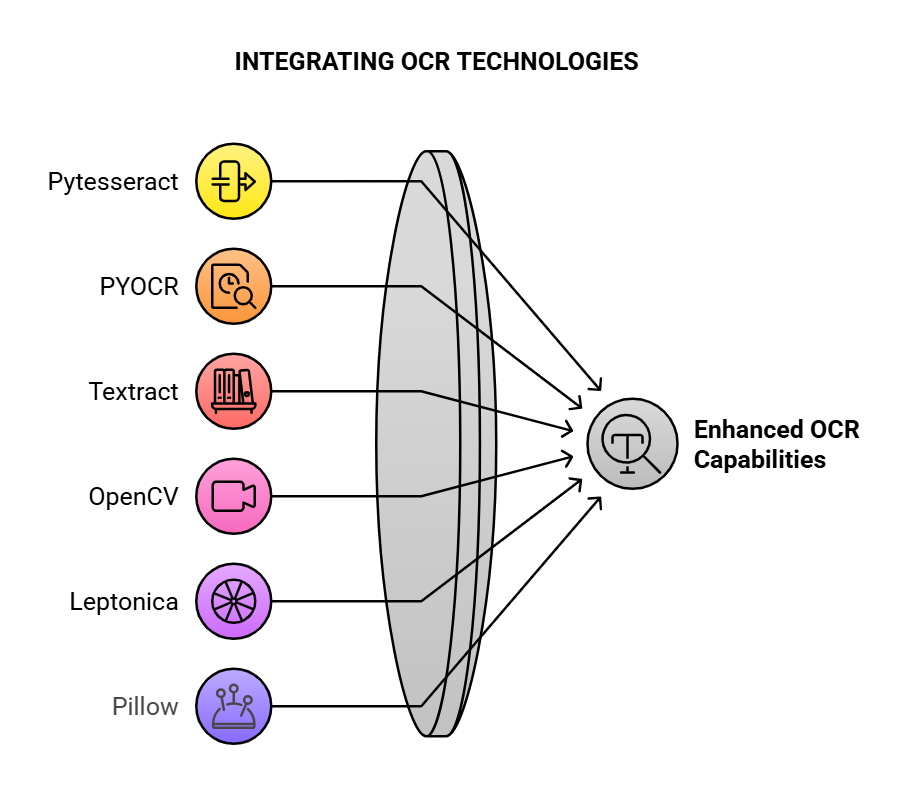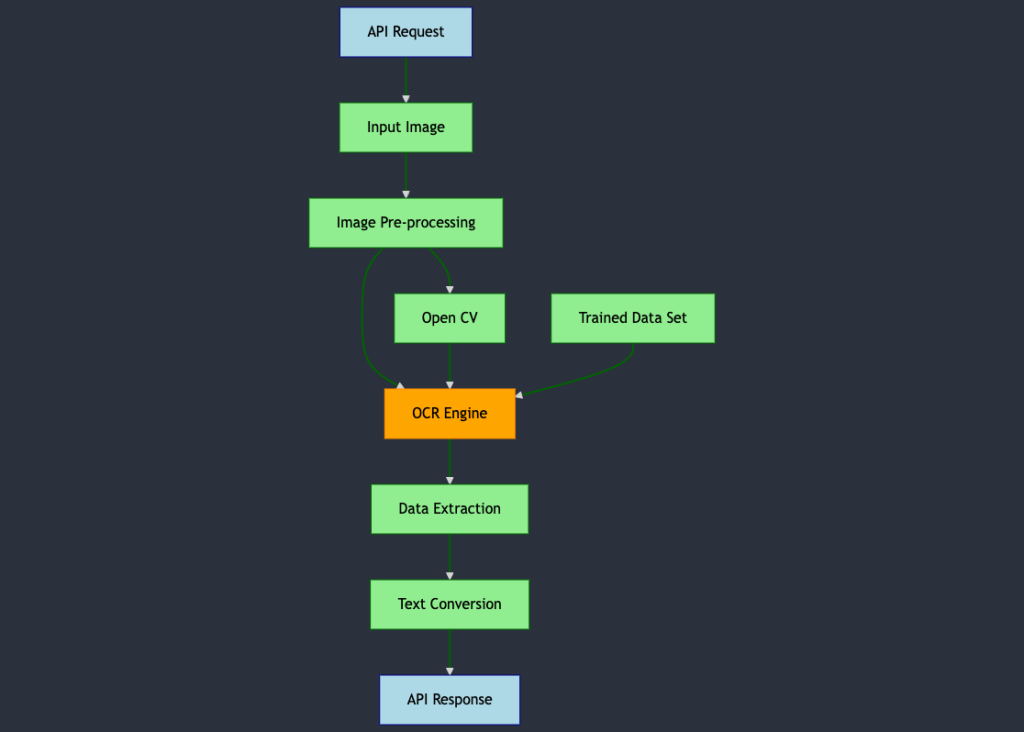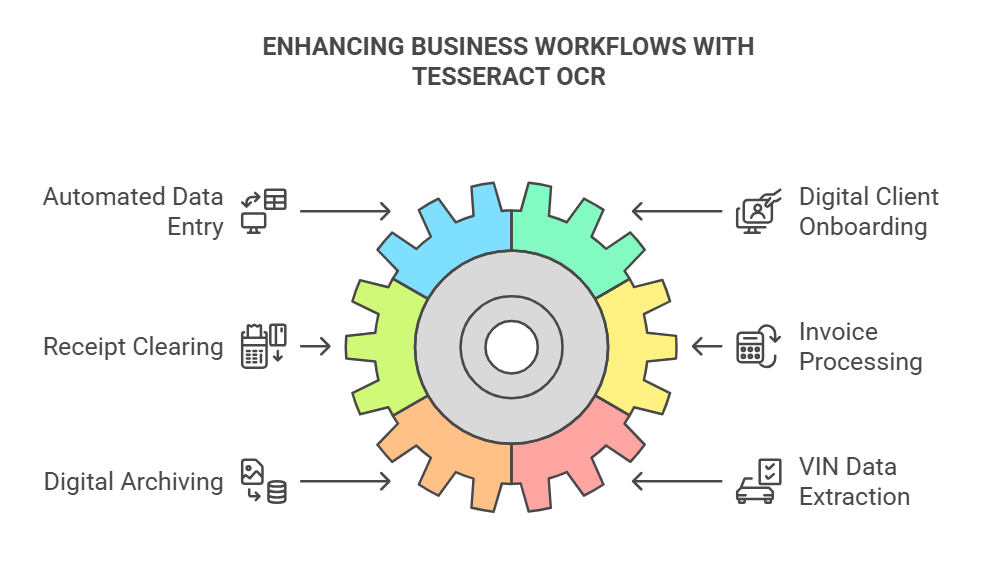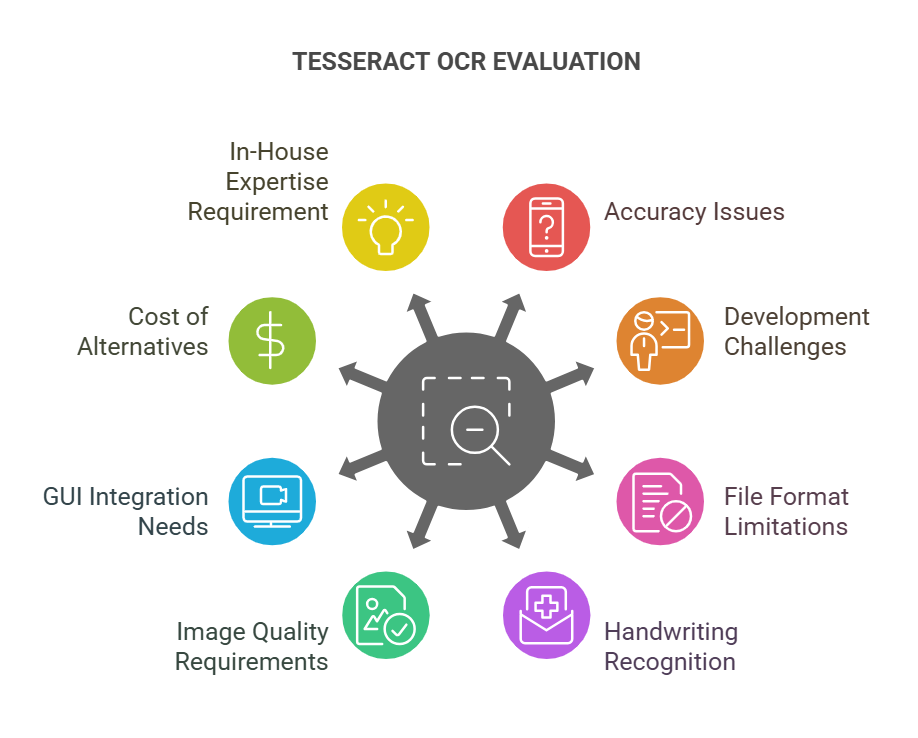
Hello, I am Kakeya, the representative of Scuti.
Our company specializes in services such as offshore development and lab-type development in Vietnam, as well as generative AI consulting. Recently, we have been fortunate to receive numerous requests for system development in collaboration with generative AI.
Have you heard of Tesseract OCR? It is a tool that has been gaining attention recently, but many people may not fully understand what it is or whether it suits their needs. Some may find the installation process somewhat challenging and feel unsure about whether they can use it effectively. If that sounds like you, then Tesseract OCR is the perfect solution.
Tesseract OCR is an open-source OCR engine that can extract text from images. It supports over 100 languages and is completely free to use. Moreover, it can be seamlessly integrated with Python, making it a versatile tool for various applications.
In this article, we will provide a comprehensive guide to Tesseract OCR, covering everything from its basic concepts and installation steps to practical use cases and a comparison with the latest technology, LLMWhisperer. By the end of this article, you will undoubtedly be able to master Tesseract OCR!
Now, let’s embark on a journey into the world of Tesseract OCR together!
What is Tesseract OCR?

For those who want to first learn about AI-OCR, we highly recommend reading this article beforehand.
Related Article: What is AI OCR? Detailed Explanation of the Latest Technology and Industry Use Cases
Overview of Tesseract OCR
Tesseract OCR is an open-source OCR engine developed by Google. Since it is free to use, it has been widely adopted by many companies and developers. It supports over 100 languages and is a highly powerful tool for extracting text from images.
Moreover, Tesseract OCR is capable of recognizing text with high accuracy, especially excelling in recognizing printed text. It operates on multiple platforms, making it available for cross-platform use.
This enables easy implementation in various environments and allows for flexible operation. Being open-source, Tesseract OCR benefits from strong community support, ensuring continuous improvements. Additionally, it offers a wide range of features for preprocessing and post-processing images, allowing for even more accurate text extraction.
Due to these features, Tesseract OCR is widely used across various industries and applications. Notably, it is designed to handle handwritten text and documents with complex layouts, making it suitable for a diverse range of use cases. The history of Tesseract OCR dates back to the 1980s, and through numerous updates, it has evolved to provide more advanced functionalities. Compared to other OCR technologies, it is highly regarded for its accuracy and flexibility.
Integrating Tesseract OCR with Python: Pytesseract
Tesseract OCR can be easily utilized in Python by using Pytesseract, a Python wrapper for Tesseract OCR. Pytesseract serves as a bridge between Python code and Tesseract OCR, ensuring compatibility and operability with various software structures. Besides Pytesseract, there are other Python OCR libraries and wrappers that integrate with Tesseract OCR, such as:
- PYOCR: Provides numerous options for detecting text, numbers, and words.
- Textract: Enables extraction of data from large files and packaged PDFs.
- OpenCV: An open-source library focused on real-time computer vision (CV) programming functions.
- Leptonica: Allows image processing and image analysis applications using imaging libraries.
- Pillow: A Python imaging library that supports opening, manipulating, and saving images.
By leveraging these libraries, Tesseract OCR functionalities can be further expanded, enabling more advanced image processing and data extraction. In particular, combining Tesseract OCR with OpenCV is highly effective for preprocessing images and noise reduction, thereby improving Tesseract OCR’s accuracy. Additionally, using Pytesseract allows for the development of various applications by integrating with Python’s extensive library ecosystem.

Processing Flow of Tesseract OCR
The processing flow of Tesseract OCR consists of the following six steps:
- API Request: Tesseract OCR can only be accessed via API integration. Once a connection between the solution and Tesseract OCR is established, an API request can be sent from the solution to the Tesseract OCR engine.
- Input Image: The input image for text extraction is sent through the API request.
- Image Preprocessing: Before extracting data, Tesseract OCR’s image preprocessing functions are activated. The purpose of this step is to optimize image quality as much as possible to ensure accurate data extraction results. In many cases, OpenCV and Tesseract OCR are combined to enhance image quality before data extraction.
- Data Extraction: The Tesseract OCR engine processes the input image using pre-trained datasets along with Leptonica or OpenCV to extract data.
- Text Conversion: Once data (text) is extracted from the input, Tesseract OCR can convert it into various supported formats, such as PDF, plain text, HTML, TSV, and XML.
- API Response: Once the output is ready, the solution receives an API response along with the final output.

This processing flow allows Tesseract OCR to efficiently extract text from images. In particular, during the image preprocessing step, techniques such as noise reduction and contrast adjustment are applied to enhance the image quality. This significantly improves the accuracy of Tesseract OCR, enabling more precise text extraction. Additionally, by utilizing Tesseract OCR via API, it can be easily integrated with other systems and applications.
Enhancing Image Processing with OpenCV and Tesseract OCR
OpenCV is an open-source library for computer vision functions that can enhance the data extraction capabilities of OCR engines such as Tesseract OCR. By utilizing the OpenCV library, the following features can be integrated into OCR solutions:
- Object Detection: Enables the solution to detect various objects.
- Deep Neural Networks (DNN): Allows the solution to classify images.
- Image Processing: Incorporates various techniques such as edge detection, pixel manipulation, and skew correction, enabling better handling of input images.
Without OpenCV, Tesseract OCR would not be as sophisticated as today’s OCR solutions. Modern OCR solutions apply various AI technologies, and by incorporating OpenCV, the preprocessing capabilities of Tesseract OCR can be significantly enhanced. This is especially beneficial for extracting text with high accuracy from noisy or low-resolution images. As a result, Tesseract OCR can be applied to a broader range of use cases.
Installing Tesseract OCR in Python

Installing Pytesseract is not always straightforward, and you might find the installation process confusing. Let’s start with the basic installation steps. First, you need to install Tesseract OCR, and then install the pytesseract Python package.
For Windows:
pip install pytesseract
For Linux (Ubuntu/Debian):
sudo apt-get install tesseract-ocr
These are the initial basic steps for installing pytesseract. However, there are some potential issues that may arise during the installation process. Below are steps you can take to resolve them.
To troubleshoot installation issues, the first step is to check the error messages and take the appropriate measures. In particular, configuring environment variables and verifying dependencies are essential for ensuring a smooth installation process.
Advantages of Python Tesseract

Use Cases of Tesseract OCR
Tesseract OCR can be used to improve document processing workflows in businesses that handle documents from customers, suppliers, partners, or employees. Below are some key use cases where Python OCR can be applied:
- Automated Data Entry: Data entry tasks often create bottlenecks due to their tedious nature. By using OCR, manual data entry can be eliminated, reducing costs by up to 70%.
- Digital Client Onboarding: OCR is extremely useful for extracting personal information from identification documents. By using OCR, businesses can offer remote onboarding solutions, eliminating the need for front-desk onboarding processes.
- Automated Receipt Clearing for Loyalty Campaigns: If a business runs large-scale loyalty campaigns that require verification of a large number of receipts, OCR can help by extracting data into a database before verification. This is where Tesseract OCR plays a crucial role.
- Automated Invoice Processing for Accounts Payable: The accounts payable process consists of multiple steps, often starting with manual data entry. OCR can significantly reduce turnaround time and costs through automated invoice data extraction.
- Digital Archiving: Searching for information in paper archives can be extremely time-consuming. Digital archiving with OCR offers multiple benefits, such as cost reduction, GDPR compliance, and improved data accessibility.
- VIN Data Extraction: Handwriting Vehicle Identification Numbers (VINs) on paper or forms is not always an efficient method. Extracting VINs using Tesseract OCR makes the process seamless and significantly improves operations.
Even if your specific use case is not listed here, don’t worry. Like other Python OCR solutions, Tesseract OCR can generally enhance many document-related workflows.
However, one thing to keep in mind is that Tesseract OCR is not a ready-to-use solution. For each of the use cases mentioned above, it is necessary to combine multiple APIs and utilize various Python wrappers and programming function libraries.
Additionally, to support specific use cases, the OCR engine needs to be trained on large datasets. This requires substantial resources in terms of time and money. While Tesseract OCR can help businesses increase efficiency and reduce costs, proper preparation and planning are necessary before implementation.
By leveraging Tesseract OCR, manual processes can be automated, significantly improving workflow efficiency. As a result, businesses can allocate their resources to more critical tasks, leading to an overall increase in productivity.

Training Tesseract OCR

Limitations of Tesseract OCR
Tesseract OCR is highly useful in many instances and use cases. However, like other open-source solutions, it has certain drawbacks that should always be considered. This section explains these limitations one by one.
- Tesseract OCR is not as accurate as more advanced solutions that incorporate AI.
- If there is little separation between the foreground and background in an image, Tesseract OCR is prone to errors.
- Developing a custom solution using Tesseract OCR requires significant resources and time.
- Tesseract OCR does not support all file formats on its own.
- Tesseract OCR does not recognize handwritten text.
- Image quality must meet a certain DPI (dots per inch) threshold for it to function properly.
- Tesseract OCR requires further development, including AI integration to automate specific document processing tasks (such as verification and cross-check validation).
- Tesseract OCR lacks a graphical user interface (GUI), meaning it must be connected to an existing GUI or a custom GUI must be developed.
- Additional development requires both time and money.
Overall, Tesseract OCR may be a suitable solution if the OCR use case is simple and if there is in-house knowledge of developing OCR solutions using Python. However, if scalability, accuracy, or a ready-to-use solution is required, Tesseract OCR may not be the best choice.
While Tesseract OCR is free to use, some paid options may be simpler and more cost-effective compared to implementing Tesseract OCR. Other reasons why Tesseract OCR may not be an ideal choice include:
- Long setup time
- The need to establish connections with ERP or accounting systems
- Lack of support for specific use cases
- No available training data
- Lack of in-house expertise in Python-based OCR
Considering these limitations, it is crucial to carefully evaluate and plan before implementing Tesseract OCR. In particular, if customization or additional development is required to meet specific needs, it may be worth considering other OCR solutions.

Alternatives to Tesseract OCR: Klippa DocHorizon

LLMWhisperer: The Latest OCR Technology
LLMWhisperer is a technology that presents complex document data in a way that is most understandable to LLMs (Large Language Models). While traditional OCR engines like Tesseract OCR primarily rely on pattern recognition and predefined datasets, LLMWhisperer combines deep learning techniques and natural language processing (NLP) to interpret and understand text in a more context-aware manner.
LLMWhisperer is designed to handle a wide range of document types, including complex layouts, handwritten notes, and multilingual content.
Comparison Between LLMWhisperer and Tesseract OCR
While Tesseract OCR is a suitable tool for basic OCR tasks, it heavily relies on traditional image processing techniques and pre-trained models, which may not perform well on non-standard or complex documents. In contrast, LLMWhisperer uses deep learning models that can adapt to various writing styles, languages, and document structures.
- Contextual Understanding:
Since LLMWhisperer utilizes LLMs, it can comprehend the context of the recognized text, making it particularly effective in interpreting ambiguous or unclear characters, especially when dealing with handwritten documents or multilingual content. - Versatility in Document Types:
LLMWhisperer excels in processing complex document layouts, such as tables, forms, and multi-column texts, where Tesseract OCR may struggle without extensive preprocessing or post-processing.
LLMWhisperer is highly accurate in handling complex documents, which are often challenging for traditional OCR technologies. This enables LLMWhisperer to support a wider range of use cases.
